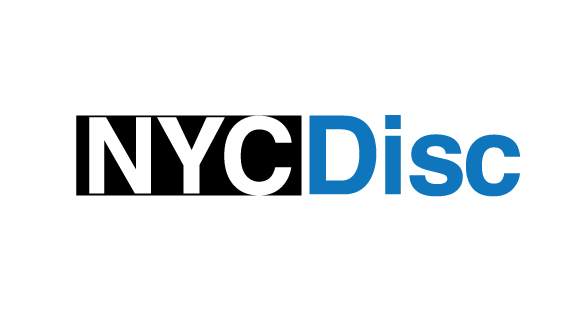Anatomy of the Human Back
The spinal column (or vertebral column) extends from the skull to the pelvis and is made up of 33 individual bones termed vertebrae. The vertebrae are stacked on top of each other group into four regions:
- Cervical 7 Neck C1 – C7
- Thoracic 12 Chest T1 – T12
- Lumbar 5 or 6 Low Back L1 – L5
- Sacrum 5 (fused) Pelvis S1 – S5
- Coccyx 3 Tailbone None
The cervical spine is further divided into two parts; the upper cervical region (C1 and C2), and the lower cervical region (C3 through C7). C1 is termed the Atlas and C2 the Axis. The Occiput (CO), also known as the Occipital Bone, is a flat bone that forms the back of the head.
Atlas (C1)
The Atlas is the first cervical vertebra and therefore abbreviated C1. This vertebra supports the skull. Its appearance is different from the other spinal vertebrae. The atlas is a ring of bone made up of two lateral masses joined at the front and back by the anterior arch and the posterior arch.
Axis (C2)
The Axis is the second cervical vertebra or C2. It is a blunt tooth–like process that projects upward. It is also referred to as the ‘dens’ (Latin for ‘tooth’) or odontoid process. The dens provides a type of pivot and collar allowing the head and atlas to rotate around the dens.
Thoracic Vertebrae (T1 – T12)
The thoracic vertebrae increase in size from T1 through T12. They are characterized by small pedicles, long spinous processes, and relatively large intervertebral foramen (neural passageways), which result in less incidence of nerve compression.
The rib cage is joined to the thoracic vertebrae. At T11 and T12, the ribs do not attach and are so are called “floating ribs.” The thoracic spine’s range of motion is limited due to the many rib/vertebrae connections and the long spinous processes.
Lumbar Vertebrae (L1 – L5)
The lumbar vertebrae graduate in size from L1 through L5. These vertebrae bear much of the body’s weight and related biomechanical stress. The pedicles are longer and wider than those in the thoracic spine. The spinous processes are horizontal and more squared in shape. The intervertebral foramen (neural passageways) are relatively large but nerve root compression is more common than in the thoracic spine.
Purpose of the Vertebrae
Although vertebrae range in size; cervical the smallest, lumbar the largest, vertebral bodies are the weight bearing structures of the spinal column. Upper body weight is distributed through the spine to the sacrum and pelvis. The natural curves in the spine, kyphotic and lordotic, provide resistance and elasticity in distributing body weight and axial loads sustained during movement.
The vertebrae are composed of many elements that are critical to the overall function of the spine, which include the intervertebral discs and facet joints.
Functions of the Vertebral or Spinal Column Include: Protection Spinal Cord and Nerve Roots and many internal organs
Base for Attachment Ligaments
Tendons and Muscles
Structural Support Head, shoulders, chest – Connects upper and lower body – Balance and weight distribution
- Flexibility and Mobility Flexion (forward bending)
- Extension (backward bending)
- Side bending (left and right)
- Rotation (left and right)
- Combination of above
Other Bones produce red blood cells – Mineral storage
Back Pain
The epidemic of back pain is enormous: It’s a $44+ billion dollar industry, the leading injury in industrial accidents; the cause of disability for people under the age of 45; will strike 90% of all American adults; the second-leading surgical procedure, and it is getting worse!
- Up to 85% of the US Population will have Back Pain at some time in their life.
- On any given day 6.5 million people are in bed because of back pain.
- 5.4 million Americans are disabled annually due to back pain.
- An estimated 93 million workdays are lost each year due to back pain.
- 90% of all back pain resolves in 6-12 weeks.
- 5-10% of low back pain becomes chronic.
- Only 20% of all back surgeries are successful after 2 years.
- The total number of spine surgeries in the U.S. approaches 500,000 per year.
- An estimated $45 – 54 billion is spent on the treatment of low back pain per year
Herniated disc
As a disc degenerates, it can herniate back into the spinal canal, which is known as a disc herniation (or a herniated disc). The weak spot in a disc is directly under the nerve root, and a herniated disc in this area puts direct pressure on the nerve, which in turn can cause pain to radiate all the way down the patient’s leg to the foot.
Approximately 90% of disc herniations will occur at L4-L5 (lumbar segments 4 and 5) or L5-S1 (lumbar segment 5 and sacral segment 1), which causes pain in the L5 nerve or S1 nerve, respectively.
L5 nerve impingement from a herniated disc can cause weakness in extension of the big toe and potentially in the ankle (foot drop). Numbness and pain can be felt on top of the foot, and the pain may also radiate into the rear.
S1 nerve impingement from a herniated disc may cause loss of the ankle reflex and/or weakness in ankle push off (e.g. patients cannot do toe rises). Numbness and pain can radiate down to the sole or outside of the foot
